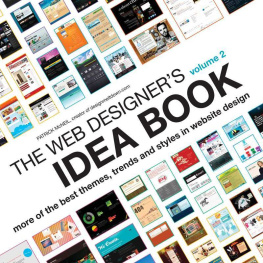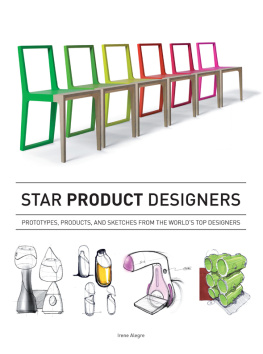Introduction
Before we dive into this book, I would first like to set in place some fundamental expectations and boundaries for what this book endeavors to accomplish. The intention of this book is to help designers gain an understanding of how the web works and how their designs are ultimately implemented. Through this, designers will be able to predict and appreciate the impact their design has on the full life cycle of a website. By doing so, designers will be able to escape the creative bubble in which they often exist and begin to design sites with a more holistic view.
I like to compare this to oil painting, a topic many creatives can more easily identify with. A budding painter simply attempts to control the paint on a paintbrush. Eventually the artist matures and can control things well enough that he starts asking questions: How does the type of canvas I use impact the painting? What impact does the primer have on the life of a canvas? What impact does it have on how the painting will look? What are the various solutions I can use to impact the consistency of my paint and how it looks on the canvas? These, and countless other questions, essentially dive into the technical details of oil painting. These technical issues are the limitations the artist works with, regardless of how aware of them he is. These limitations will often frustrate the new painter until he begins to understand them and thereby make sense of the limitations he has been working with. In the end, it is up to the creativity of the artist to work the medium in unique and beautiful ways. But the fundamental limitations of the medium cannot be escaped.
This parallels very well the intentions of this book and how web design works. I seek to educate creatives on what might be considered a digital medium. By fully understanding all the limitations, strengths and weaknesses of the web, one can begin to work with it and not against it. This is not about holding creatives back, but rather allowing them to unleash their full potential. I am a believer in the clich, Knowledge is power. In this case, knowledge of the medium empowers the creative to make informed decisions and ultimately provide more value to their employers and clients.
I also want to be sure to mention what this book is not. This book will not teach you how to code. There are more than enough books on such topics. I will, however, point you in the right direction whenever possible. Also, this book will not teach you how to actually design anything. I will not be spelling out for you what makes a design beautiful.
It should also be said that in many cases this book will serve as a launching point for topics outside the scope of our exploration. As much as possible I will point you to additional resources to implement certain topics or learn about them in greater detail. With a holistic view in mind, it is impossible to dig into every topic in depth. This is also where the online extension of this book plays a huge role. Be sure to register for access to additional and up-to-date resources related to the various topics presented here.
A WORD FROM THE AUTHOR
This book is the culmination of countless conversations, many presentations and an ongoing effort to guide designers into web design. For years I have worked to help designers understand how the web works, how to design for it effectively and how to plan and build websites. I believe that the better you know the medium, the more effective you can be as a designer. And frankly speaking, the more effective you are, the more valuable you are.
You will find that many of the sections in this book will require further reading, and this is by design. With many of the topics presented here, I am only able to scratch the surface, and as such, further reading may be necessary. However, the information given here should help you place the topic in the overall context of designing and building websites. I highly encourage you to explore the topics that impact you most by reading beyond this book.
More than anything, I sincerely hope this book helps you to understand the web. I hope that it helps you to work with the developers you might feel come from a different planet and who certainly speak a different language. And finally, I hope that you will find the web to be an engaging and fulfilling medium, capable of first-class design.
The web is one of the most incredible media ever created, and the more designers understand it, the more exciting I believe they will find it to be. Though, to fully understand the web may seem impossible; I for one have spent a decade trying to do so. In the end, I realize I will never learn all there is to know. This is part of the charm of the web, though. If you thrive on learning, trying new things, experimenting and working in a community, then you will find the web a wonderful place to work. Incidentally, I believe those are many of the traits that creatives hold near to their hearts.
NOTE: Be sure to register at TheDesignersWebHandbook.com for free and exclusive access to even more great tools and resources to help you make the most of the web. If you would like to submit your designs for use in my next book, please visit TheDesignersWebHandbook.com to sign up for my mailing list. You will be informed of book releases, calls for entries and other information directly related to the books. Submitting your sites is free, easy to do and open to everyone. And if you think you are too small of a shop to submit your work, I encourage you to do so anyway. Take pride in showcasing what is happening on the web. In many ways, it is the small shops like yours that come to shape the web.














